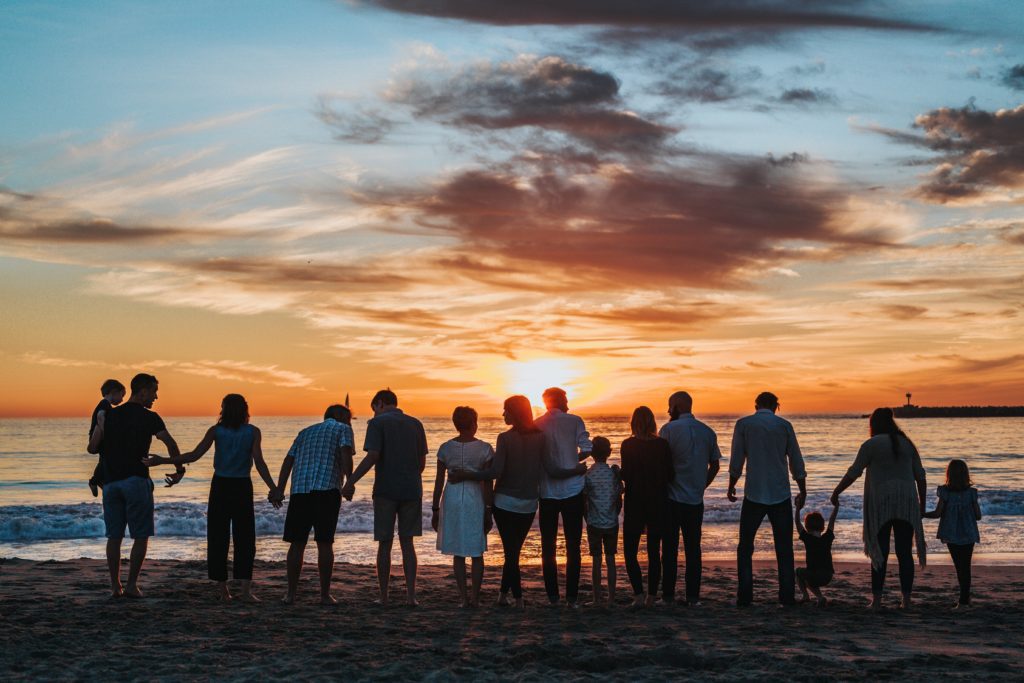April is Celebrate Diversity Month, so we are resharing a post about the beauty in our differences.
Kids are so impressionable, curious, optimistic. “Intrusive” questions and stares mortify parents but with proactive conversation and patient responses to innocent inquiries, our kids can have all the resources they need to be kind, knowledgeable and understanding of the beautiful diversity they see around them.
————————————-
Scene: a playdate with your mom friends. Kids squealing, coffee in hand. Everyone starts sharing embarrassing questions their kids have asked out loud in public. End Scene. I think stories would abound! In those moments, awkwardness may supersede, but are we seizing the opportunity to have a teachable moment? Instead of shushing our kids in the name of saving face, I believe we can find a way to navigate these conversations so they grow to notice and appreciate the differences around them.
In light of Adoption Awareness Month, we can look at statistics, see the sweet pictures and ponder the plight of kids needing to be adopted. I want to talk to you about how we engage our biological kids in conversations about our differences, particularly when it comes to transracial families and coming in contact with adoptive families. While I want my husband and I to be the primary influences in our kids’ young years, we want them to see there isn’t one way to exist. I want them to be inclusive and aware of the world around them. Families no longer look one particular way. Many kids are not raised by two parents, or are raised by other family members; some families don’t “match.”

So how do we switch gears from embarrassment and empowerment? Hushing a child creates shame and sends the message that it’s not okay to bring up our differences. As an adoptive parent, I’ve experienced adults staring and more kids bluntly ask “How are you her mom when you’re white and she’s brown?” A matter-of-fact answer from me, I hope, affirms it’s not wrong to notice and expands the view of what’s normal and accepted.
If it seems appropriate, facilitate conversation between the other child or their parent. Most people would rather answer a question than be whispered about. I’d take the opportunity to educate over a child missing the chance to learn what adoption is.
What we can do as parents is teach boundaries. If you notice your child is more curious, or pushes deeper, it might be appropriate to continue the conversation between the two of you. I truly don’t mind answering a question, explaining that adoption is what made our family. From there, I’d love to see parental involvement. I’ve experienced ongoing stares at my daughter or kids repeatedly asking, as kids do! Engage your kid so [myself or my daughter, in my instance] don’t have to continue to do the work for you. Ultimately, adoption is a part of our story, and so many others, so a general explanation of adoption is appropriate. The kids I know are happy to share “I’m adopted!” but there are always details and a story that is only the child’s to share. And that’s not for a random kid in the Chick-fil-A playplace.
Exposing our kids pro-actively to various abilities and family structures will affect their comfort and adaptability to environments contrasting their experiences. If the premise of adoption is familiar, single-parent homes, or split families, it won’t seem so off-the-wall. Remember, too, we overthink these things far more; children seek to understand the world around them and we are the vessels to help with that. Surrounding our kids with books and TV shows with characters of different ethnicities, abilities and families is a simple way to show them a wider worldview. Going to events in different neighborhoods, cultural festivals, bringing to light the beautiful differences in a child with Down Syndrome, saying positive things of transracial families will normalize what they will inevitably see at some point.
When all else fails, when you don’t have the answers, when you “miss” the opportunity, when you catch yourself staring alongside your kids, start with “Hello!” It’s as simple as showing our kids there’s no barrier to kindness. So instead of “don’t stare,” encourage “say hello!” It distracts from the moment, then you can come back to it when you’re comfortable.
Isn’t it beautiful when we embrace and accept everyone? It really does start with acknowledging differences, rather than feigning we don’t see them in the name of color-blindness. To bring up our kids in an embracing and informed way, it takes some work from us on the front lines. Adoptive mamas need you to embrace this with us. We don’t want our kids to feel like their identity is questioned every time they go to the grocery store or playground; they don’t need to explain themselves. Terminology matters, like “real mom” versus biological mom, and so does the element of privacy. The question is: are we willing accept the responsibility and potential discomfort it takes?

Amanda has lived in St. Louis for all but 9 months of her 31 years. After marrying her high school sweetheart, they quickly began their adventures together. Always planning a trip, they make time for traveling with and without the kids. They have two biological sons, a foster daughter of nearly 3 years and have had around 15 other kids in and out of their house since 2012. Amanda loves summer, family fun, sleep, and a good glass of wine and appetizers.










